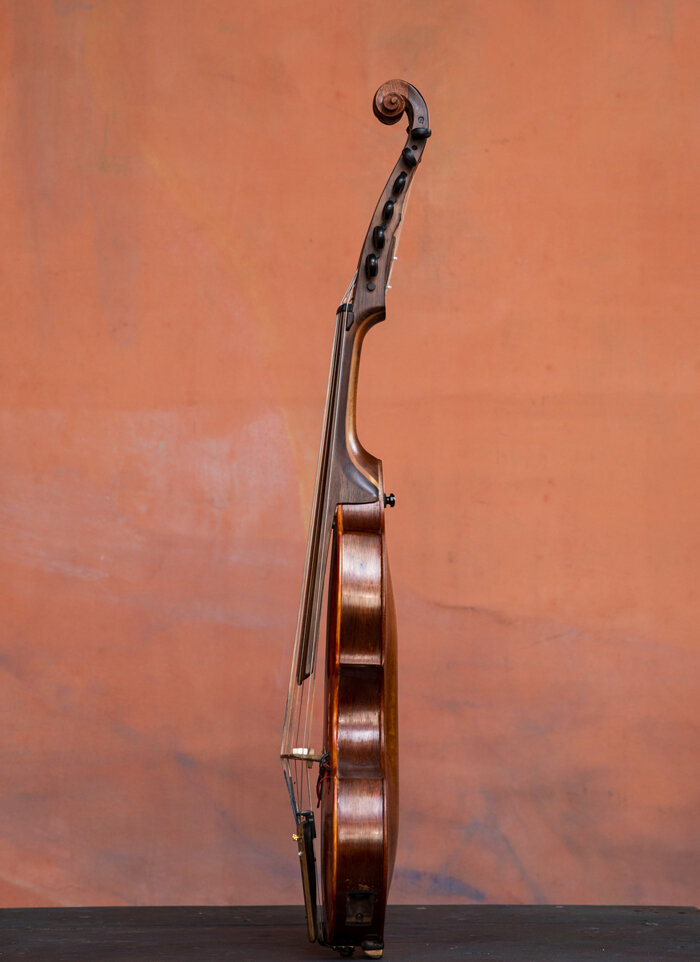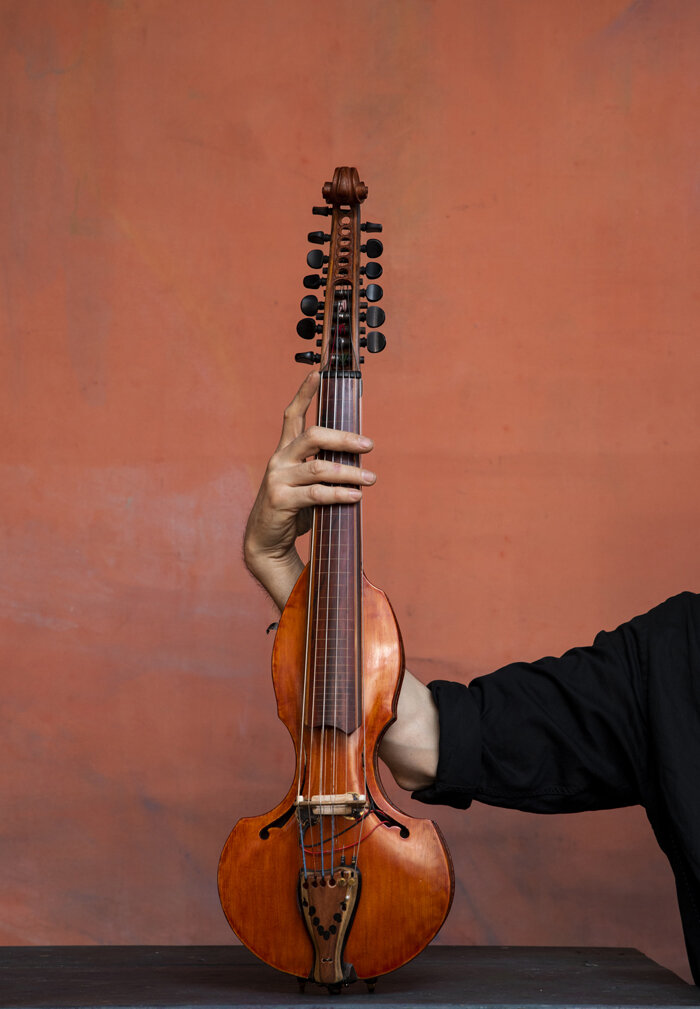INVENTION XIV: VIOLA D’FOU
The name of this instrument is abbreviated from “Viola D’Amour Fou.” This is a modern electroacoustic instrument developed, but distinct, from the viola d’amour of the Renaissance. Like its predecessor, this instrument gets a distinctive sound though the combination of six playing strings and seven mostly-unplayed sympathetic strings, with five of the latter running through a channel between the fingerboard and the neck. In a significant departure from the older instrument, the ’Fou places its tonic and dominant sympathetic strings running along each side of the fingerboard where they can be plucked by the little finger and thumb of the left hand as drone and rhythm accompaniment to melodies bowed on the main playing strings. Jawari bridges on the sympathetic strings create a buzzing tone on the sympathetic resonance more akin to classical Indian music than to an echo.
While it could, on a long shot, fit to be played under the chin, it is designed to be played upright in the lap, like a tenor viol. This instruments favors drones and open tunings to get full use of the open resonances. The most common tuning that I use is ADadfa, with outside drone strings on D and a. The other sympathetic strings are tuned to key notes of whichever scale is being used. It is fretless, however, equal temperament fret lines are inlaid in the fingerboard that help find untempered notes for more modal scales (such as maqam or raga).
The sides are back are Philippine mahogany with a tightly-grained spruce top and maple bridge. The fingerboard is cocobolo; the neck is Honduran mahogany with stripes of juniper and rosewood; and the tailpiece is ebony and rosewood.
It is electrified through a piezo pickup. The interior of the soundbox is a drastic departure from tradition and features multiple secondary resonators that create a reverb-like effect, even acoustically, through interlocking springs and membranes.
This is the first ’Fou built of what is planned to be a family of violon d’Fous of various sizes and string configurations. The key elements are the sympathetic strings with the Jawari bridge, the drone strings running down the sides of the neck designed to be plucked by the left hand, and the interior secondary reverberators.
Although this instrument is clearly a variation of the viola d’amour, its intention is not to recreate early music but rather to be a tool for modern innovation. The technique of bowing while simultaneously plucking with the left hand gives the ’Fou a distinct feeling to work on.
Photographs by Adrian Buckmaster.







